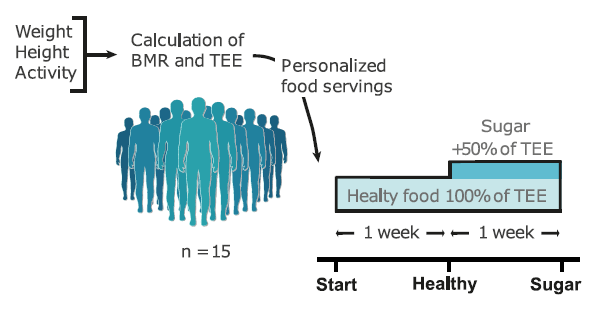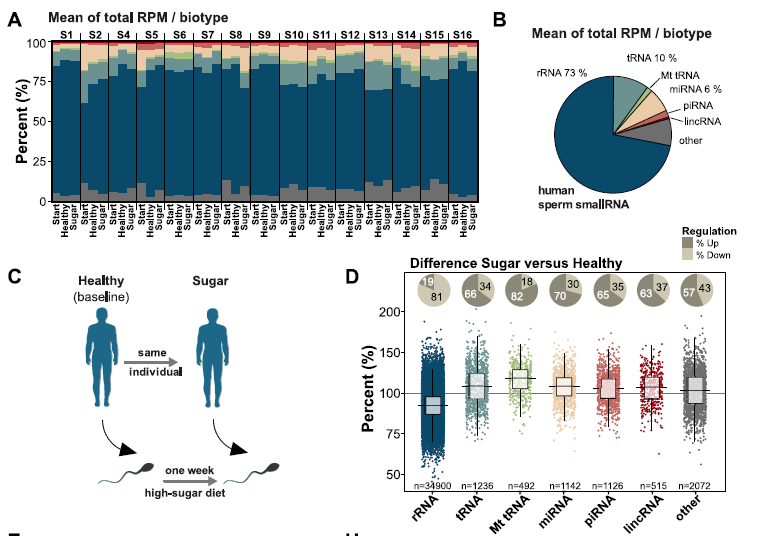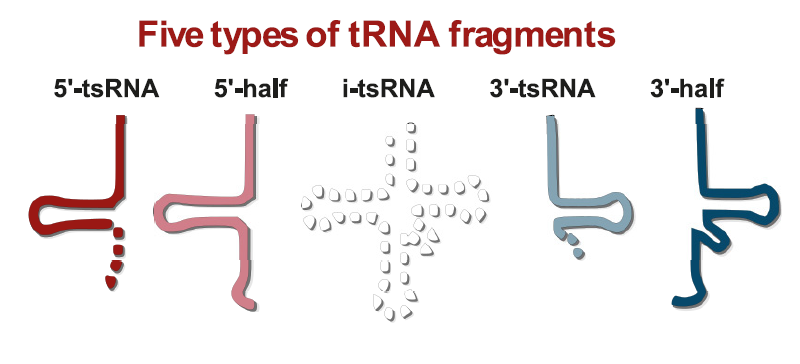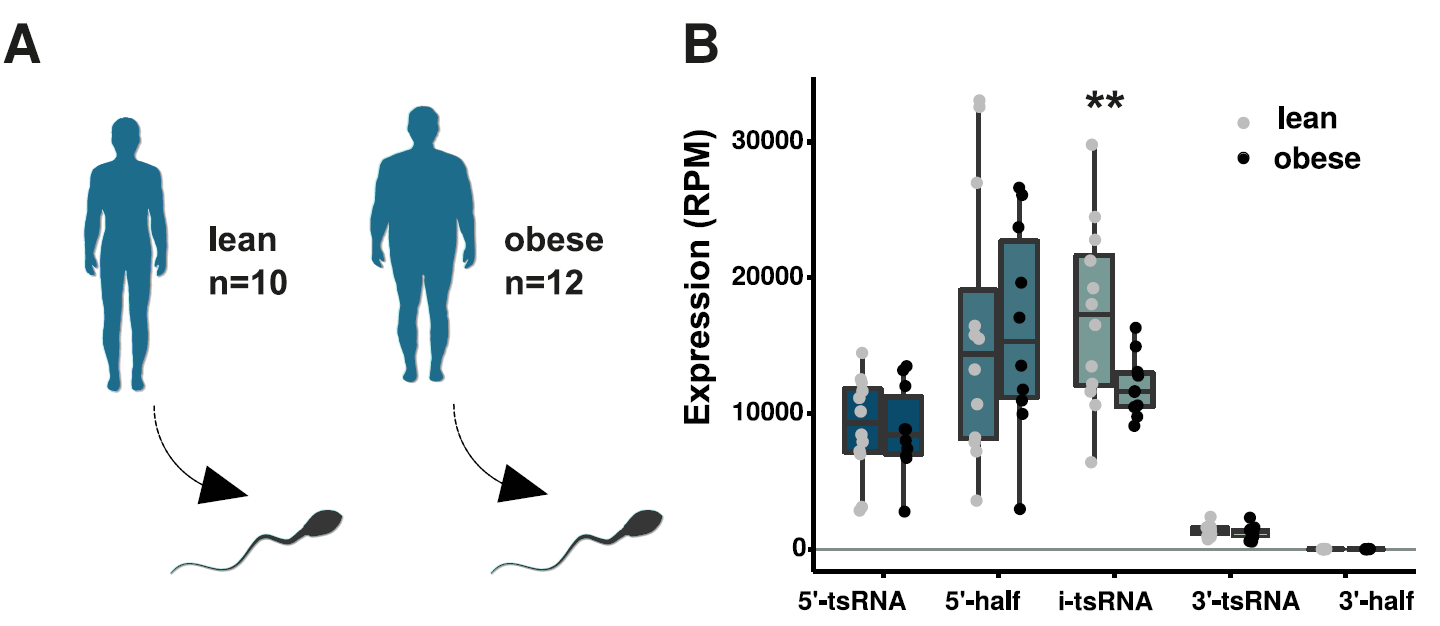2020-03-22 by Quick Biology Inc.
Human sperm quality declines during the past 35 years. Risk factors for low sperm quality involve environmental issues (e.g., pesticides and heavy metals), lifestyle (e.g. tobacco, alcohol drinks). Obesity with associated diabetes is another risk factor. In recent PLoS Biology, Daniel Natt and colleagues used a two-step diet intervention model to study how diet affects sperm’s motility (Fig.1). Fifteen men were recruited between 20-27 years old with a normal body mass index. They consume meals of healthy food for 1 week -----healthy week, then they were given an additional 50% of their estimated total energy expenditure (TEE) in week 2 --- Sugar week. Small RNA sequencing was performed between in start, healthy week and Sugar week (Fig.2). Interestingly, although the abundance of different small RNA types showed no big change, they discovered one types of tRNA (i.e. i-tsRNA, Fig.3) showed significant changes between a healthy week and sugar week. Furthermore, by analyzing independently published data, these i-tsRNA also significantly changes between mean and obese individuals (Fig.4). These diet-sensitive i-tsRNA correlates with sperm motility, which provide novel insights about the interplay between nutrition and male reproductive health.
Figure 1: Two-step diet intervention. 15 participants were given a standard diet for 1 week followed by a week with additional sugar. TEE, total energy expenditure. BMR, basal metabolic rate. (ref1)

Figure 2: Small RNA-seq profiles from motile sperm of 15 participants. (A) Small RNA-seq profiles from motile sperm of each participant (S1-S16; n = 15) were analyzed at the experimental start point (“Start”), after the first week of healthy diet (“Healthy”), and after the second week of high-sugar diet (“Sugar”). (B) Mean proportion of small RNA across the experiment. (C) The intervention was primarily designed for investigating the effect of Sugar compared to Healthy (baseline). (D) Fold changes in biotypes after 1 week of high-sugar diet (Sugar/Healthy). (ref1)

Figure 3: Sperm from obese men display changes in i-tsRNAs. Focusing on tsRNA, they annotated the complex mix of tsRNAs into 5 subtypes: 5'-half, 5'-tsRNA, i-tsRNA, 3'-tsRNA and 3'-half. (A) Previously published data by Donkin and colleagues on sperm small RNA from obese and lean men (SRA project: SRP065418) was reanalyzed using our analytical workflow. (B) Boxplot show mean, and individual expression, of the different tsRNA types (grey dots lean individuals, black dots obese individuals). Error bars indicate ± SEM. (ref1)


Quick Biology is an expert in small RNA-seq. Find More at Quick Biology.
Ref:
1. Nätt, D. et al. Human sperm displays rapid responses to diet. PLoS Biol. 17, 1–25 (2019).



